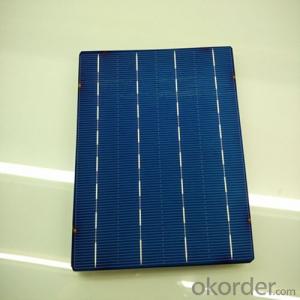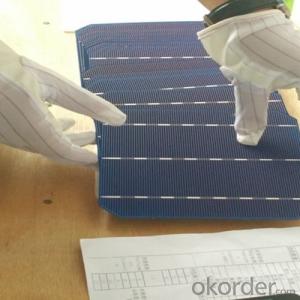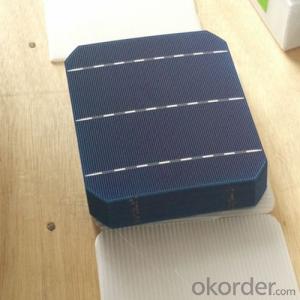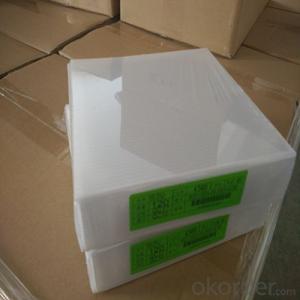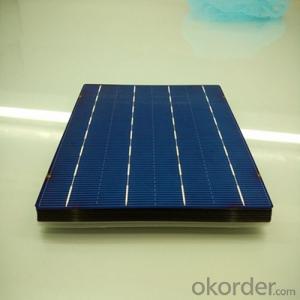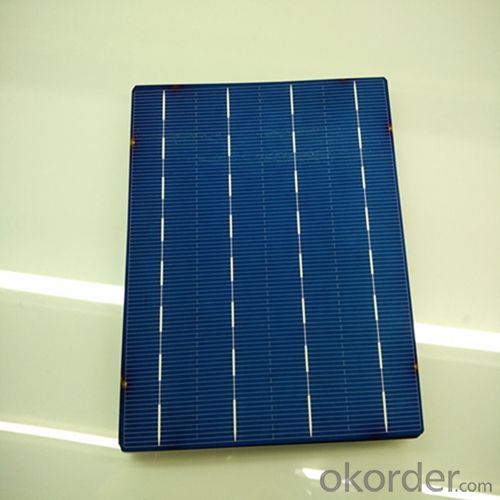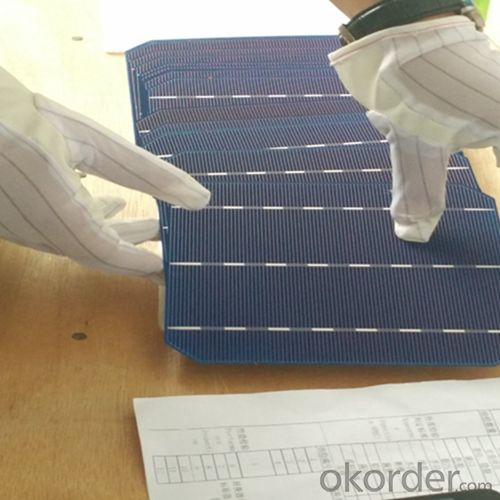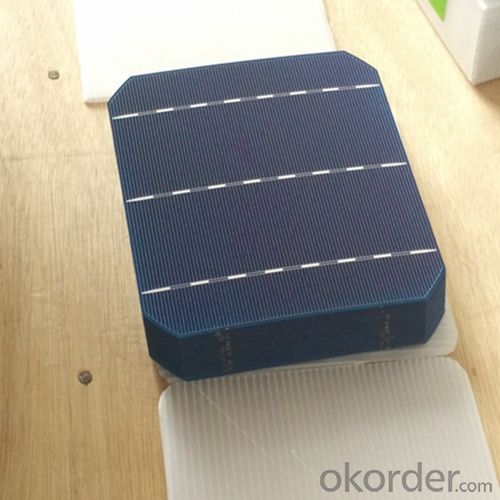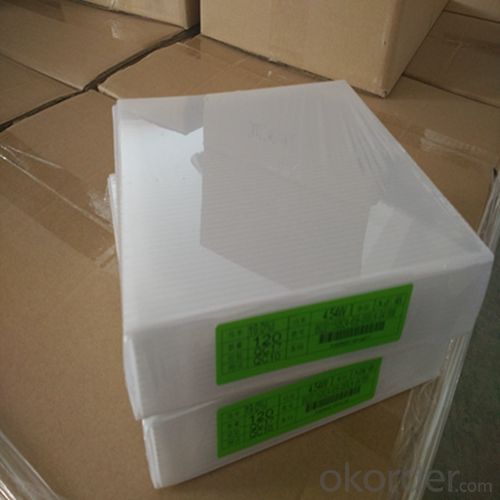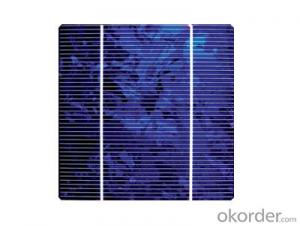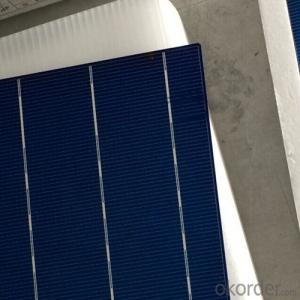Poly 156x156 Solar Cells Class A Made in China for Garden Lights
- Loading Port:
- Shanghai
- Payment Terms:
- TT OR LC
- Min Order Qty:
- 6700 watt
- Supply Capability:
- 6000000 watt/month
OKorder Service Pledge
OKorder Financial Service
You Might Also Like
The operation of a photovoltaic (PV) cell requires 3 basic attributes:
The absorption of light, generating either electron-hole pairs or excitons.
The separation of charge carriers of opposite types.
The separate extraction of those carriers to an external circuit.
In contrast, a solar thermal collector supplies heat by absorbing sunlight, for the purpose of either direct heating or indirect electrical power generation from heat. A "photoelectrolytic cell" (photoelectrochemical cell), on the other hand, refers either to a type of photovoltaic cell (like that developed by Edmond Becquerel and modern dye-sensitized solar cells), or to a device that splits water directly into hydrogen and oxygen using only solar illumination.Characteristic of Mono 156X156MM2 Solar Cells
You are gaining energy independence - add battery backup power for even greater energy security
The cost of electricity is only going to rise – insure against that rising cost
Adaptive cells change their absorption/reflection characteristics depending to respond to environmental conditions. An adaptive material responds to the intensity and angle of incident light. At the part of the cell where the light is most intense, the cell surface changes from reflective to adaptive, allowing the light to penetrate the cell. The other parts of the cell remain reflective increasing the retention of the absorbed light within the cell.[67]
In 2014 a system that combined an adaptive surface with a glass substrate that redirect the absorbed to a light absorber on the edges of the sheet. The system also included an array of fixed lenses/mirrors to concentrate light onto the adaptive surface. As the day continues, the concentrated light moves along the surface of the cell. That surface switches from reflective to adaptive when the light is most concentrated and back to reflective after the light moves along
Mechanical data and design
Format | 156mm x 156mm±0.5mm |
Thickness | 210μm±40μm |
Front(-) | 1.5mm bus bar (silver),blue anti-reflection coating (silicon nitride) |
Back (+) | 2.5mm wide soldering pads (sliver) back surface field (aluminium) |
Temperature Coefficient of Cells
Voc. Temp.coef.%/K | -0.35% |
Isc. Temp.coef .%/K | +0.024%/K |
Pm.Temp.coef. %/K | -0.47%/K |
Electrical Characteristic
Effiency(%) | Pmpp(W) | Umpp(V) | Impp(A) | Uoc(V) | Isc(A) | FF(%) |
18.35 | 4.384 | 0.526 | 8.333 | 0.63 | 8.877 | 78.39% |
18.20 | 4.349 | 0.526 | 8.263 | 0.63 | 8.789 | 78.54% |
18.05 | 4.313 | 0.525 | 8.216 | 0.63 | 8.741 | 78.32% |
17.90 | 4.277 | 0.524 | 8.161 | 0.625 | 8.713 | 78.04% |
17.75 | 4.241 | 0.523 | 8.116 | 0.625 | 8.678 | 77.70% |
17.60 | 4.206 | 0.521 | 8.073 | 0.625 | 8.657 | 77.36% |
17.45 | 4.170 | 0.519 | 8.039 | 0.625 | 8.633 | 76.92% |
17.30 | 4.134 | 0.517 | 8.004 | 0.625 | 8.622 | 76.59% |
17.15 | 4.096 | 0.516 | 7.938 | 0.625 | 8.537 | 76.80% |
17.00 | 4.062 | 0.512 | 7.933 | 0.625 | 8.531 | 76.18% |
16.75 | 4.002 | 0.511 | 7.828 | 0.625 | 8.499 | 75.34% |
16.50 | 3.940 | 0.510 | 7.731 | 0.625 | 8.484 | 74.36% |
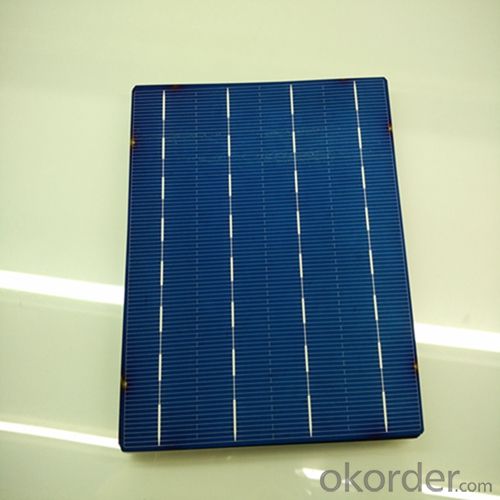
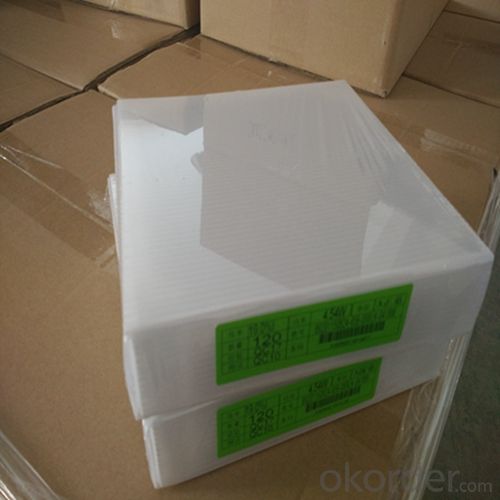
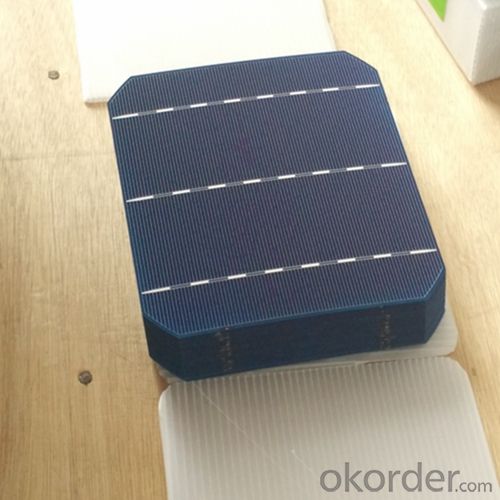
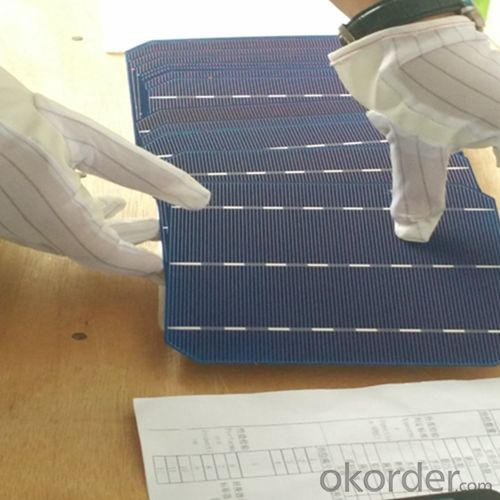
 FAQ
FAQ
Q: What price for each watt?
A: It depends on the quantity, delivery date and payment terms, generally Large Quantity and Low Price
Q: What is your size for each module? Can you tell me the Parameter of your module?
A: We have different series of panels in different output, both c-Si and a-Si. Please take the specification sheet for your reference.
Q: What is your size for each module? Can you tell me the Parameter of your module?
A: We have different series of panels in different output, both c-Si and a-Si. Please take the specification sheet for your reference.
- Q: How do solar cells perform in areas with high levels of humidity?
- Solar cells generally perform slightly less efficiently in areas with high levels of humidity. The moisture in the air can reduce the amount of sunlight reaching the cells and increase the chances of dust and dirt accumulation on the surface, both of which can hinder their performance. However, technological advancements have been made to mitigate these effects, and solar cells can still generate significant electricity even in humid regions.
- Q: What is the role of solar cells in reducing carbon emissions?
- Solar cells play a vital role in reducing carbon emissions by converting sunlight into clean, renewable energy. As solar cells generate electricity with no greenhouse gas emissions, they help to offset the use of fossil fuels for power generation, which is a major contributor to carbon emissions. By harnessing the sun's energy, solar cells provide a sustainable alternative and help to mitigate climate change by reducing our reliance on carbon-intensive sources of power.
- Q: How do solar cells impact air pollution?
- Solar cells have a significant positive impact on air pollution as they produce clean and renewable energy. By harnessing the power of the sun, solar cells reduce the need for fossil fuel combustion, which is a major source of air pollution. This means that the use of solar cells helps to decrease harmful emissions such as carbon dioxide, sulfur dioxide, and nitrogen oxides, leading to cleaner and healthier air.
- Q: What is the best way to deal with surplus solar cells abandoned after burning?
- The surplus of solar cells can be very useful or useless at all. Totally depend on how people try to apply it to the new construction work.
- Q: What is the impact of solar cell installations on job creation?
- The impact of solar cell installations on job creation is significant. As the demand for renewable energy continues to grow, the solar industry has experienced substantial job growth. Installing solar cells requires a skilled workforce, creating employment opportunities in manufacturing, installation, maintenance, and sales. Moreover, the development of solar projects stimulates local economies, attracting investments and creating jobs in related sectors such as engineering, finance, and construction. Therefore, solar cell installations have a positive impact on job creation, fostering a sustainable and thriving green economy.
- Q: Are solar cells affected by electromagnetic radiation?
- Yes, solar cells are affected by electromagnetic radiation. In fact, solar cells rely on electromagnetic radiation, specifically sunlight, to generate electricity.
- Q: What is a multi-junction solar cell?
- A multi-junction solar cell is a type of photovoltaic cell that consists of multiple layers of different semiconductor materials, each designed to absorb different wavelengths of sunlight. This allows the cell to convert a broader spectrum of light into electricity, resulting in higher efficiency and improved performance compared to traditional single-junction solar cells.
- Q: What is the working principle of a solar cell?
- It's not easy to explain in a simple way.
- Q: What materials are commonly used to make solar cells?
- Silicon is the most commonly used material for making solar cells. Other materials, such as cadmium telluride, copper indium gallium selenide, and perovskite, are also used in certain types of solar cells.
- Q: I have a turnkey solar power project starting in 6 months, now we are searching the market in south China to find the best solar cells manufacturers. Any professional suggestion or recommendation?
- As one of the manfacturers based in China who can provide most varieties of batteries, majored in rechargeable batteries: Cylindrical lithium-ion battery, lithium polymer, lithium iron phosphate, NI-MH, nickel cadmium, nickel zinc batteries; Disposable lithium batteries: Lithium manganese (3.0V).
Send your message to us
Poly 156x156 Solar Cells Class A Made in China for Garden Lights
- Loading Port:
- Shanghai
- Payment Terms:
- TT OR LC
- Min Order Qty:
- 6700 watt
- Supply Capability:
- 6000000 watt/month
OKorder Service Pledge
OKorder Financial Service
Similar products
Hot products
Hot Searches
Related keywords
